When it comes to guitars, some timbers are more popular than others. Maple ranks exceptionally high on the popularity scale. Used as necks, bodies, backs, sides, drop-tops, carved tops, headstock overlays, you name it! Maple is considered a hardwood and while it is harder than some, it is also softer than others. 128 Species of Maple Tree's grow in Asia, North America, Europe, and Nothern Africa. Also used for its tasty syrup, hardwood flooring, Bowling Pins, and Pool Cue Shafts, we have found many-a-use for this Acer!
A Sugar Maple Tree doin' it's seasonal thang'
Fender, Gibson, Gretsch, Rickenbacker, Guild, and many other well-known manufacturers build with maple to this day. Electric, acoustic, guitar, bass, ukulele, mandolin, drums, you name it! Maple is widely used as the neck material on all fretted instruments. It is also used in electric solid-body guitars as a carved or drop-top, and as the back and sides of acoustic guitars. Solid Maple electric guitars are uncommon due to the cost of maple, it produces heavier guitars, and the brightness it imparts on the tone.
Hard Maple, Soft Maple, Big Leaf Maple
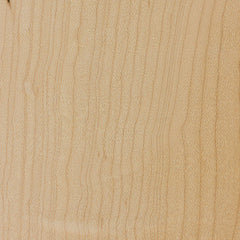
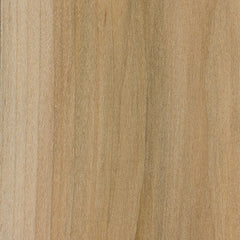
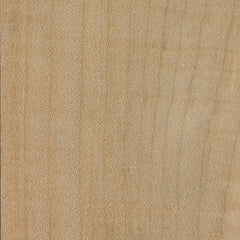
Visually: There are many types of maple but if you can see through all the figuring, you'll see that the most over-the-top looking piece of flame and quilt share characteristics with the plain stuff. Maple tends to be white, creamy, or yellow. It is mostly straight-grained but can display wavy patches, or "relief maps" as I like to call them. On figured pieces, pink, blue, and gold iridescent patches are brought out with staining and finishing techniques.
Speaking of finishing techniques...

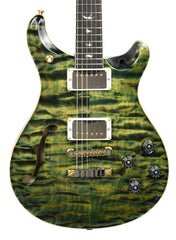
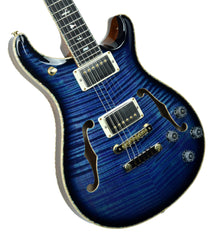
Janka Hardness Rating: Hard Maple comes in at 1450, as does Birdseye Maple, Curly Maple, and Sapele. This seems to be the magic neighborhood when choosing neck material. With Mahogany coming in at only 900, it makes sense that 99 out of 100 guitars with busted headstocks feature 2 things: Mahogany and they tilt back.
Tone-wise: While Maple is still used on both acoustic and electric guitars, these days it is most often used for a neck or the top on an electric guitar. As a neck, maple produces brighter tones than mahogany with less warmth and sustain. Maple necks offer a strong plosive, fast attack, and very lively feel. Maple's hardness reflects the vibrations rather than absorbing them, giving it that liveliness or quick responsive feel. Putting a Rosewood fingerboard on a Maple dampens that attack and requires a whole other blog post!

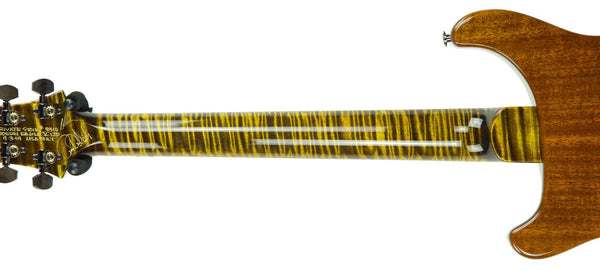
Electric Guitars: As a Solid-Body Electric, it's bright. Too bright for my liking. Also, due to its density, it's heavy. It also reflects resonance really well so if a non-vibrating guitar body is your thing then have at it! An experience I learned from involved playing a 57 Black Beauty from Gibson with a Mahogany Top. Not a completely different animal but enough of a change that I played the guitar with a different approach, less Rock more Jazz. I specifically recall playing a Maple Gibson RD model that was just unbearably harsh and brittle. Laminate Maple bodies like on the ES-335 and many Gretsch models don't suffer from this issue but from my experiences with solid Maple bodies, they are inherently and intensely bright. As a veneer or carved top, it pairs perfectly with Mahogany to add some top-end top it. Maple and Mahogany are like peanut butter and jelly or rather Syrup and Pancakes :) But syrup is also good on biscuits (alder), bacon (basswood), Waffles (korina), all sorts of stuff, so don't go pigeon-holing, now!
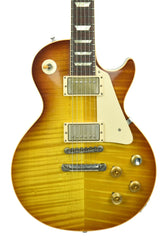

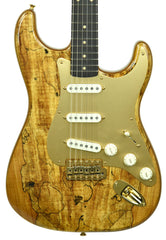
The Mike Bloomfield 59 Les Paul, A PRS Wood Library McCarty 594 Semi-Hollow and a Fender Custom Shop Artisan Spalted Maple Strat. 3 kind of Serious Eye Candy!
As Back and Sides: On Acoustic Guitars, Maple has become less common. Whether that's due to demand being low, I can only speculate. I love Maple back and sides on a 12 String or Super Jumbo Gibson, especially. It is full sounding with an accentuated top end. The low-end is massive with the unfortunate capacity to get boomy. It records well, mixes easily, and provides a massive dynamic range. Though, I find it sounds better with a pick than with fingers. I like it due to its strong fundamental sound, it's like Mahogany but not as dry, but still kinda dry?
This McPherson is on Fiah!
Why for Guitar? Maple has a great strength to weight ratio for a neck. It's stable, depending on how it is finished and then treated. It's also easy to work with, takes a finish without pore filling, and has several different figures that create impressive visuals. Tiger, Flame, Quilt, Birdseye, and Spalted are some of the most well known.
Personal Experience: I own maple in many configurations. The Relief Map top of my Les Paul Custom under a Heritage Cherry Sunburst is beautiful. The highly figured back and sides of my Super Jumbo 100 has me wondering how I got such flamed out wood on a 100? The necks on ALL my custom builds, except one. My favorite neck of all time, which is Soft Maple, and weighs only 1 lb. The list goes on and on! This wood is a no-brainer if you plan to match it with single-coil pickups. Even with buckers, simply going to a Rosewood, Ebony, Pau Ferro, or Ziricote fingerboard can darken things up and smooth them out.
This one time, my Strat fell out of an open gig bag on my concrete patio during load out for a weekend of performances. After picking it and my jaw off the patio, I saw that it dinged up 2 frets but the fingerboard was totally fine. Had that been my Les Paul Custom I would have been taking it to Chip to work his Headstock Voodoo Magic!
Maple: If you own a few guitars, ya already got some!
This edition of Matt's Blog was penned by Mathew Jenkins.

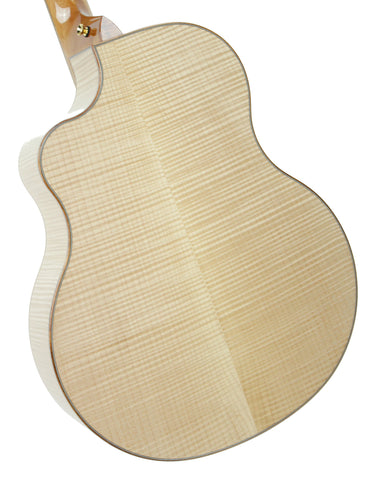
Great read! Loved how you explained maple’s role in guitars so clearly. Really helpful for beginners and enthusiasts alike. Keep sharing such informative content!
Greats insight or experience really I guess about maple.
I have a couple older Kramers made of maple ply which I love really when using the humbucker.
The neck single coil lacked to my ears..always comparing to a Strat I guess…and did change it out to a Fender Fat 50 which I absolutely love in my Strat , but it just doesn’t sound the same with little or no improvement in the Kramer.
Adversely I swapped an entire set of HSS Kramer pups which sounded very decent in the Kramer and put them in an older Squire basswood body Strat and they just sounded horrible.
These all have maple necks but was wondering if pickups are designed especially for certain wood combinations.
I took an EVH Wolfgang and tried it in one of the Kramers and it sounded nasty as well, even at high gain amp settings. Sounded better clean really.
I read an article that you can mix and match pickups as long as they’re in phase with and solid body guitar.
I just don’t find that to be the case in single pickup swaps or sometimes the entire set.
Like what would a Strat neck pup sound like in a LP?
I don’t plan on trying it with the success I’ve been having , but just wonder.
I’m not chopping in a P90 that’s for sure.
I have the adapter mounting plate and I know Strat pups are voiced a certain way as I suppose most quality pups are.
Nothing like a Strat neck pup In a Strat in my opinion. The best designs and tones have already been established in the early years.
Everything else just seams to be a ‘want to be ’ of those guitars.
A Strat, Tele, ES , and LP and a couple others.
Everything else is lacking to my ears for clean tones anyway.
Playing high gain/ distortion and shredding is another matter. Plenty of good, reasonably priced guitars for that.
Just wondering what you think on these matters.
Love to hear you’re opinion on that issue and the rest.
Guess its more than a one blogger question. Sorry.
I just get frustrated trying to improve less expensive guitars with pickup changes. Sometimes it works , sometimes it doesnt. Thx, Gary .L